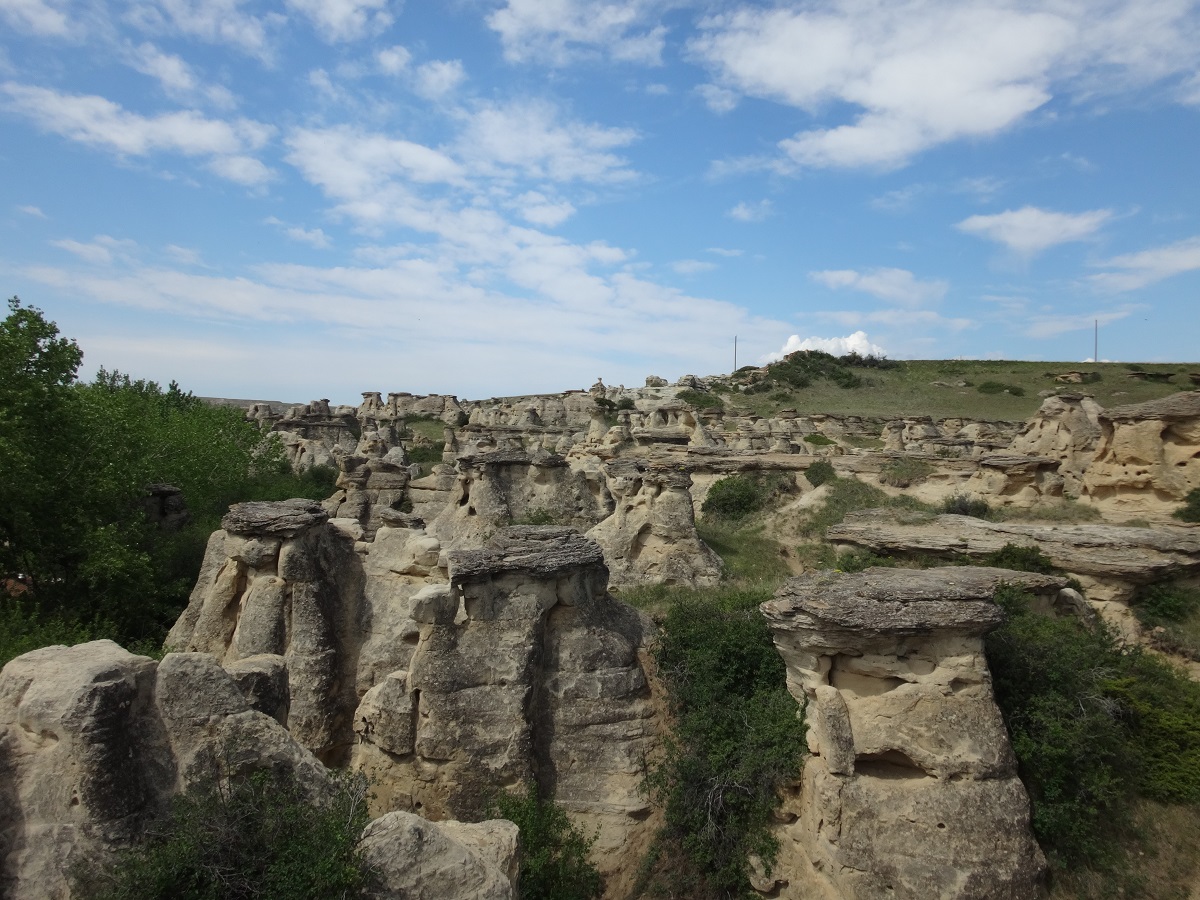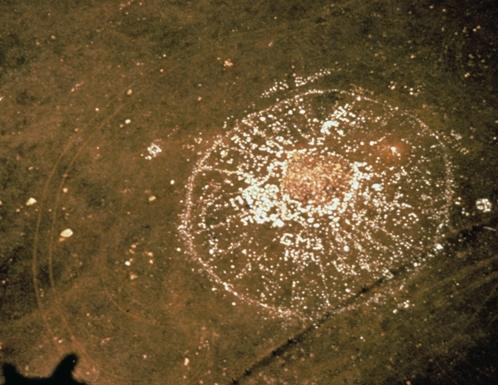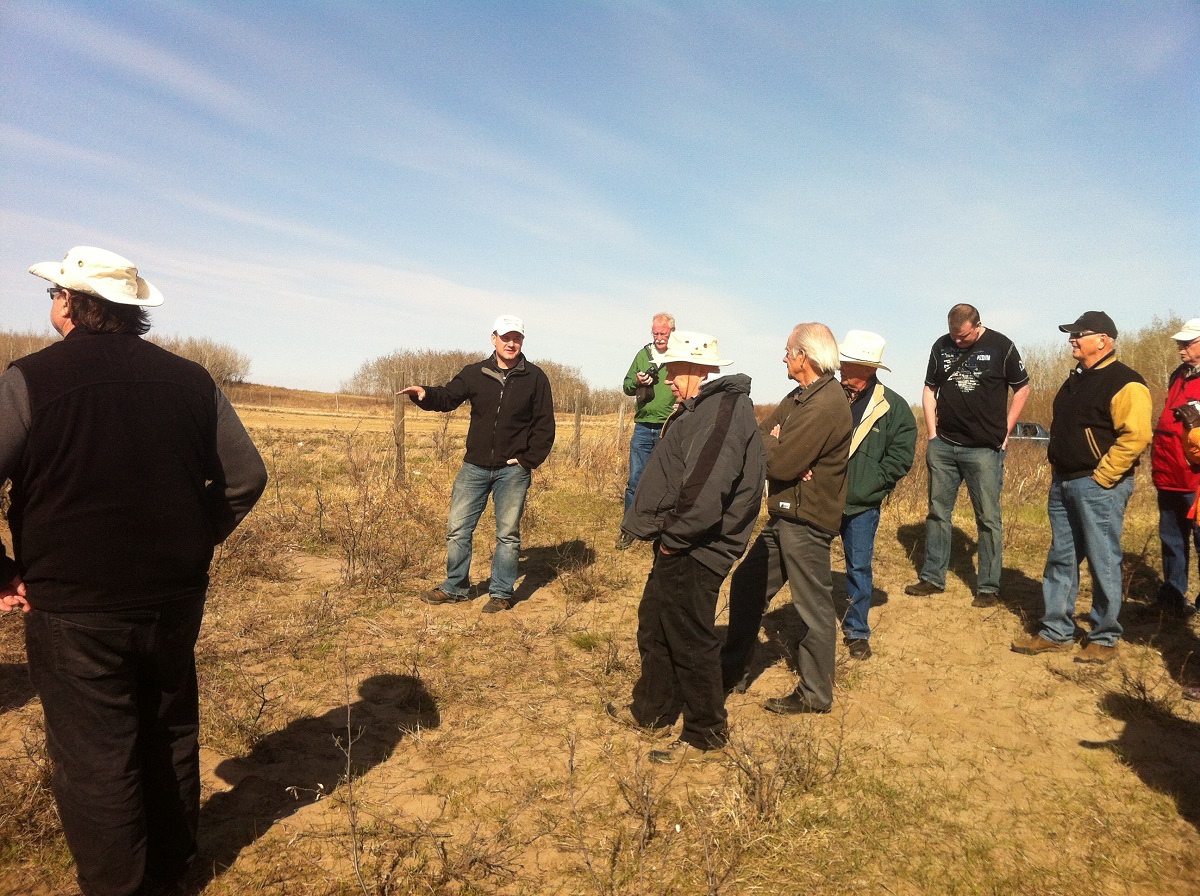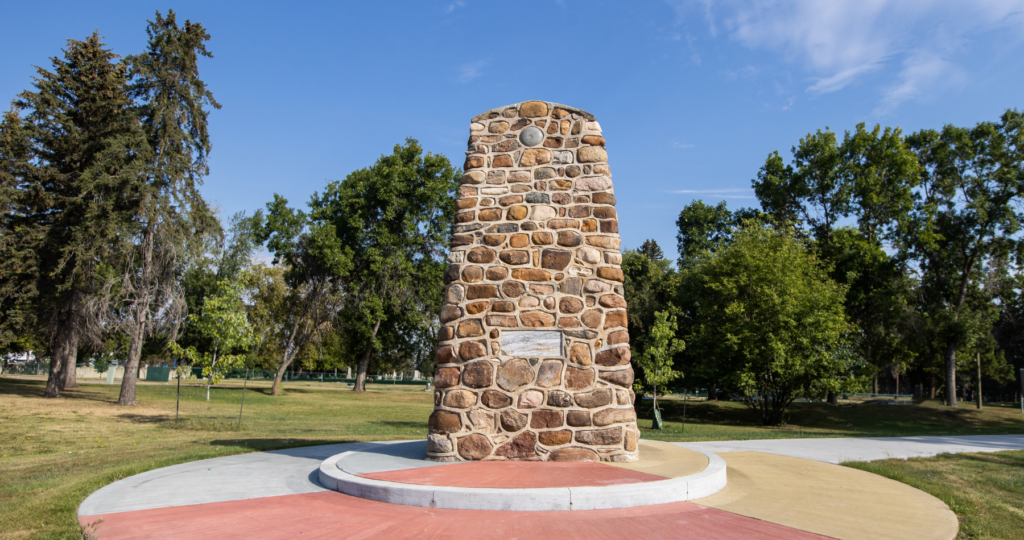Post Category : Archaeotourism Local Archaeology
Alberta Top 10 Archaeological Sites
As Canada celebrates 150 years since Confederation it is important to remember that the history of the land we call home goes back thousands of years. Tree Time Services staff discussed some of the most important archaeological sites in Alberta and created a top ten list. Several of these sites can be visited by the general public and a few have public excavation programs that allow volunteers to participate in the digs!
1. Head Smashed In Buffalo Jump
A UNESCO World Heritage site, interpretive centre, and museum located near Fort MacLeod, AB. For thousands of years the Blackfoot and other First Nations guided bison down drive lanes to the jump where they would plunge to their death or be rendered immobile from the fall and weight of the herd. At the base of the cliff these animal carcasses were butchered and distributed between the members of the hunt.
Did you know the name “Head Smashed In” does not refer to the skull crushing demise many of the bison suffered at the site but rather a Blackfoot legend? According to the story a young man wanted to watch the bison fall off the cliff from below but was unfortunately buried by the falling animals. He was later found with his head smashed in (Jack Brink pers comm).


2. Writing-On-Stone Provincial Park
The Writing-On-Stone Provincial Park is located near Milk River, AB, almost on the Montana border. Many rock carvings (petroglyphs) and rock paintings (pictographs) can be found as one wanders through the sandstone valleys and hoodoos. These rock art sites were created by Aboriginal groups visiting the area, telling stories of battles, hunts, and great deeds of individuals. There are also many images of ceremonial nature that depict spirits and the spiritual world.
These images were likely created over thousands of years by the Blackfoot people and other native groups that travelled through the southeastern plains of Alberta. While rock art cannot be directly dated some of the images can be positively dated to after 1700 AD due to the depiction of horses and items introduced by Europeans, like muskets.


3. Quarry of the Ancestors
Located north of Fort McMurray near the community of Fort McKay, the Quarry of the Ancestors is a quarry site and the primary source of Beaver River Silicified Sandstone (BRSS), a highly valued material for making stone tools. The principal use of the site for quarrying BRSS and making stone tools was between 9800-5500 years ago.
Beaver River Sandstone is found throughout the Alberta Oilsands region which was once thought to be sparsely occupied. However, due to the ongoing work occurring in advance of oil sands extraction the region is now considered one of the most densely occupied in Northern Alberta during the thousands of years prior to the arrival of Europeans.


4. Majorville Cairn and Medicine Wheel
The Majorville Cairn and Medicine Wheel is an ancient Blackfoot ritual centre that shows evidence of use as early as roughly 4500 years ago, and continues to be used today. The site consists of a 9 m wide central cairn (rock pile) which is connected to a surrounding 27 m wide stone circle by 28 spokes. The site is located on a large hill west of the Bow River in southern Alberta near Bassano, AB.


Located in the town of Bodo, on the Saskatchewan boundary half an hour south of Provost, this seven square km site is one of the largest pre-European contact archaeological sites in Canada. The site contains several repeat occupations of the area, with large intact bison pounds and campsites. Tens of thousands of bison bones have been recovered from the site as well as projectile points, scrapers, and pottery sherds.
Unlike many of the other sites on this list, this site encourages visitors to get down and dirty and help uncover Alberta’s past. The Bodo Archaeological Society allows the general public to dig at the site under the supervision of professional archaeologists. The site was also the subject of Tree Time’s own Kurtis Blaikie-Birkigt’s Masters research!


6. Wallys Beach
This ice age kill and butchering site is located in southern Alberta at the St. Mary’s Reservoir near Cardston, AB. The site contains the bones and footprints of extinct animals, including the North American horse and camel, as well as mammoth and caribou. Wally’s Beach was one of the first sites in North America containing evidence of hunting horses.
Originally thought to date to the beginnings of the Clovis era (ca. 13,000 ya), advanced radiocarbon dating techniques now dates the site to approximately 13,300 years ago.


Located approximately 11 miles east of Viking (southeast of Edmonton) are the Viking Ribstones, two large quartzite boulders on top of a high hill. The boulders are carved with a series of grooves interpreted as a representation of a bison vertebrae and rib cage. There are also several circular pits grooved into the boulder which may represent arrow or bullet holes. The pits have also been interpreted as an attempt to recreate the pock-marked surface of the Iron Creek Meteorite, another revered monument.
The bison were extremely important for many First Nations of central and southern Alberta and these rock carvings may have served as a shrine or ceremonial location. Hunters would visit the ribstones to leave offerings of sweetgrass, tobacco, beads, or coins prior to and/or after a successful hunt. There are other ribstone sites in Alberta but all other ribstone sites have been disturbed or removed entirely from their original context.


8. Banff Pithouses
The Banff Pithouses were located along the Bow River and are now lost to the expansion of the Banff Springs golf course in 1928. Documented in 1913 by Harlan Smith, an early archaeologist in the province, the site is one of the first pre-European contact sites to be preserved in Canada. The site contained 14 large (8-10 feet across) circular depressions (1-2 feet deep) with nine of the depressions arranged in an irregular line.
These semi-subterranean houses are common in the British Columbia interior plateau region but are rare in Alberta. The group that built these homes likely crossed the continental divide to hunt bison. For a period of time this was the only site of this type identified in Alberta. Fortunately, several other housepit sites have now been identified in Banff National Park and are currently being researched.


9. Cluny Site earthlodge village
An unusual site for the Southern Plains, the Cluny fortified village is located in the valley of the Bow River on the Siksika First Nation Reserve south of Calgary and is part of the Blackfoot Crossing Historical Park. At the site, dwellings made from logs and earth were surrounded by defensive features including a palisade wall and trenches.
The Cluny Fortified Village site dates to the Late Pre-contact period (Mid 1700s) where the First Nations of the Canadian Plains had not yet had direct contact with explorers of European descent but had access to European goods through trade with other First Nations groups. It is believed that the group that constructed the village migrated to the region from the Dakotas, due to similarities of artifacts with those of the Middle Missouri region. The University of Calgary will be hosting a public archaeology program from May 23rd to June 23rd, 2017 where people can volunteer to excavate at the site. Contact their administrative staff by e-mail at pubarky@ucalgary.ca, or by phone at 1-403-220-8537 for more details.


10. Fincastle Kill Site
Recently named one of the top discoveries of 2015 by Western Digs, the Fincastle site is located in the sand dunes of southern Alberta, near Lethbridge. The 2,500 year old bison kill site contains over 200,000 fragments of bone along with hundreds of stone projectile points representing two cultural groups: the Besant and Sonota.
The most interesting aspect of the site is the discovery of 8 upright arrangements of bison bones placed in sculptural patterns. These are unusual and rare in archaeological sites and the purpose of the upright features remains a mystery. Dr. Shawn Bubel of the University of Lethbridge notes that the bone arrangements are not utilitarian but were intentionally placed in patterns with unique examples of one upright, for example, features a tibia, or lower leg bone, surrounded by four jaw bones, all set on end with the teeth facing outward.





